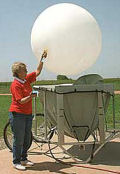Chapter 2
Models of Growth: Rates of Change
2.3 Symbolic Calculation of Derivatives: Polynomial Functions
Problems
- Use either the factoring technique or the expansion technique to explain how the Power Rule follows for arbitrary \(n\).
- Use difference quotients to derive the Sum Rule.
- It follows from your calculation of derivatives of polynomials that
\(\displaystyle\frac{d}{dx} (mx+b)=m\).
That is, the instantaneous rate of change of a linear function (at every \(x\)) is the same thing as its average rate of change, i.e., its slope. Explain why this is true.
- Suppose \(f(t)\) is any function that has a derivative, and \(C\) is any constant. Show that the function \(g(t)= f(t)+C\) has the same derivative as \(f(t)\).
-
- Use the Graph tool to graph the curve \(y=1/t^2\).
 Zoom in on a representative selection of points, and estimate the derivative of \(1/t^2\) at those points.
Zoom in on a representative selection of points, and estimate the derivative of \(1/t^2\) at those points.- Use these estimations to formulate a rule for the derivative of \(1/t^2\).
- Check your rule by making graphical estimations of the derivative at two additional points.
-
 Suppose the radius \(r\) of an inflating spherical balloon is given by the formula
Suppose the radius \(r\) of an inflating spherical balloon is given by the formula
\(r(t)=2+t/2\) centimeters.
- What is the rate of change of the radius?
- Use your graphing tool to obtain graphical estimates of the rate of change of the surface area at \(t=2\), \(3\), and \(4\) seconds. Formulate a general rule for the rate of change of the surface area, and check it at two additional points.
- Use your graphing tool to obtain graphical estimates of the rate of change of the volume at \(t=2\), \(3\), and \(4\) seconds. Formulate a general rule for the rate of change of the volume, and check it at two additional points.
-
Is this a realistic model for an inflating balloon? Why or why not?

